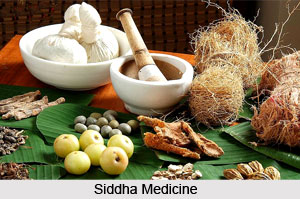 Kalajira, scientifically named as "Nigella Sativa" is commonly known as "Black Cumin". It is known as "Kalonji" and "Kalajira" in Hindi and "Krishnajiraka" in Sanskrit. It is very popular in various traditional systems of medicine like Unani, Ayurveda and Siddha. The seeds of the Nigella Sativa and its oil have long been used in the Indian as well as Arabian civilization.
Kalajira, scientifically named as "Nigella Sativa" is commonly known as "Black Cumin". It is known as "Kalonji" and "Kalajira" in Hindi and "Krishnajiraka" in Sanskrit. It is very popular in various traditional systems of medicine like Unani, Ayurveda and Siddha. The seeds of the Nigella Sativa and its oil have long been used in the Indian as well as Arabian civilization.
Health Benefits of Kalajira
The seeds of Nigella sativa are regarded as aromatic, carminative, stomachic and digestive, and are used in indigestion, loss of appetite, fever, diarrhoea, puerperal diseases etc. They are also said to increase the secretion of milk, and are therefore given to recently delivered females in combination with a few other medicines. Nigella seeds are scattered between layers of woollen clothes, shawls, etc., to preserve them from insects. This use of the seeds appears to be common all over India.
Dose of Kalajira in Medicine
In intermittent fever nigella seeds slightly roasted are recommended to be given in 2 drachm doses with the addition of an equal quantity of treacle.
In loss of appetite and distaste for food a confection made of Nigella seeds, cumin seeds, black pepper, raisins, tamarind pulp, pomegranate juice and sonchal salt, with treacle and honey is said to be very useful.
Chakradatta recommends the administration of nigella seeds with the addition of long pepper, sonchal salt and wine in the after pains of puerperal women. In puerperal diseases, such as fever, loss of appetite and disordered secretions, after delivery, the following called "Pancha Jiraka Paka" is used.
Processing of Pancha Jiraka Paka
Take nigella seeds, cumin seeds, aniseeds, ajwain, seeds of Carum sativum (ajamoda), Anethum Sowa (sulpha) and Trigonella Foenum graecum (methi), coriander, ginger, long pepper, long pepper root, plumbago root, habusha (an aromatic substance) dried pulp of the fruit Ziziphus Jujuba (vadari phala), root of Aplotaxis auriculata (kushtha) and kamala powder, each one tola, treacle 100 tolas, milk one seer and clarified butter 4 tolas. Boil them together and prepare a confection. Its dose should be about a drachm every morning on empty stomach.
This article is a stub. You can enrich by adding more information to it. Send your Write Up to content@indianetzone.com
Related Articles
Ayurveda
History of Ayurveda
Origin of Ayurveda
Ayurveda Medication
Elements of Ayurveda
Concepts of Ayurveda
Ancient Literature of Ayurveda
Sushruta Samhita
Asava and Arishta




















